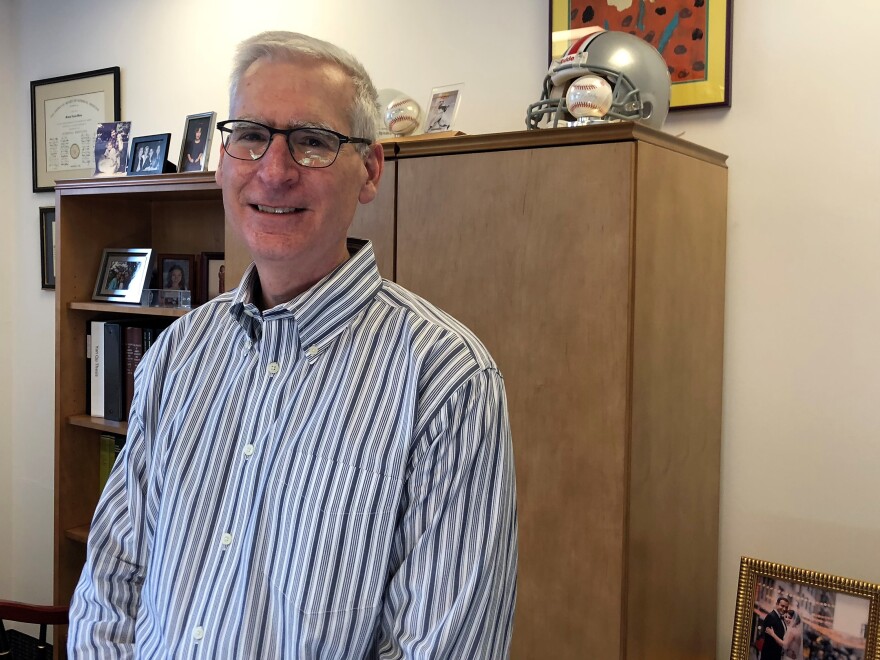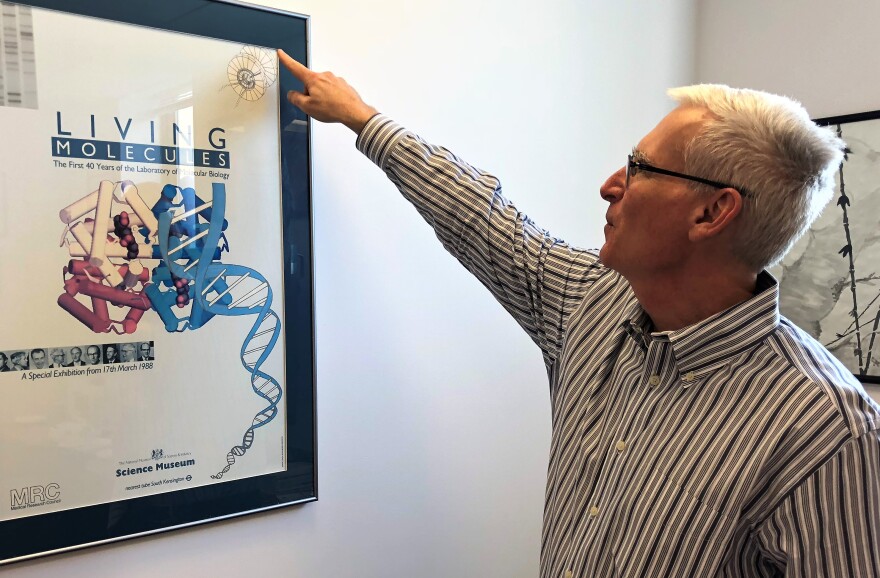It’s been nearly a hundred years since the discovery of insulin. And scientists over the past century have been gradually refining its function to make life better for people with diabetes.
Now researchers in Cleveland have developed a new generation of insulin that expands its lifesaving potential. In this week’s Exploradio, WKSU’s Jeff St.Clair looks at the latest milestone in the molecule’s history.
Meredith Balogh does a quick inventory of her diabetes survival pack.
“We’ve got insulin pens - these are a fast acting and a long acting; we’ve got extra lancing devices for checking your blood sugar; glucose meter, strips for that.”

Then she checks her blood sugar.
“It’s 105. That’s almost a unicorn." In other words, close to a perfect 100 glucose level.
For the past 20 years, Balogh has been kept alive by daily injections of insulin. Her pens’ formulations give her some flexibility with meals, but she initially used a blend developed in the 1950’s, “and it was much more intensive.”
Another problem with it, and all types of insulin, is they can’t take the heat.
Balogh learned this lesson the hard way.
“I traveled for a bit and I had to be careful where you leave you bag. Are you going to cook it in the car, are you gonna cook it in the sun?”
Insulin’s heat sensitivity remains a problem for diabetics, especially in parts of the world without ready access to refrigeration.
Survival without refrigeration
Worldwide, around 285 million people have diabetes. Most have type-2 ,which can be managed through diet, exercise, and other medications. But around 28 million people, like Balogh, have type-1, which means they need insulin to survive.
And in poor countries where electricity is patchy, keeping it cold is a matter of life and death.
Case Western Reserve University researcher Michael Weiss saw this first hand when he traveled to Africa as a grad student.
“Patients would bury their insulin in clay pots in the ground in an effort to keep the insulin from degrading in the equatorial heat," says Weiss.

He thought it would take a few months for him to come up with a type of insulin that wouldn’t break-down.
"It’s been 35 years and we finally think we do have a solution.”
A beautiful molecule
Insulin, like any protein, is made up of amino acids arranged in a specific sequence. Those building blocks fold in on themselves to give the molecule a shape that allows it to do its job.
Weiss shows me a machine that tests at what point insulin unfolds. "We can compare different analogs to see if we’re making a better insulin or a worse insulin.”
Like a master sculptor, Weiss has shaped a better insulin through intimate knowledge of its chemical personality.
"When you get to know a molecule atom by atom, you can have an intuition for what changes you can make which would alter properties that might be more favorable for patients.”
With fatherly pride Weiss points to an artist’s rendering of insulin hanging in his office.
“A beautiful molecule indeed,” he intones.
Borrowed from birds and worms
But how did Weiss achieve his goal of creating a type of insulin that doesn’t need refrigeration? The answer, he says, came from looking at how insulin works in other creatures.

It turns out that all animals, from worms to birds, create their own variety of insulin. And Weiss found that birds do it a little better in a part of the molecule called the A-chain.
“There’s a position in the A-chain that seems sub-optimal in human insulin and chemically much more suitable in bird insulin, so we borrowed that.”
He also took inspiration from worms to create a type of insulin that’s super stable, fast acting, has few side-effects and works with newer delivery devices.
"So we found a sweet spot,” says Weiss.
He calls it ultra-stable insulin.
Cleveland company attracts $17 million in funding
Weiss formed a company called Thermalin to develop his discoveries, and caught the attention of French pharmaceutical giant Sanofi, which contributed the majority of $17 million in seed funding.
Their goal is to use the fast-acting formulation in a new generation of implantable insulin pumps connected to continuous glucose monitor.
"This is really getting us close to an artificial human pancreas,” says Weiss
The investment may also advance his goal of helping diabetics in Africa and Asia get the heat-resistant insulin they need.
Weiss says it's a dream realized after decades of dead ends in the lab, overcome, in the words of Winston Churchill, "by going from failure to failure with undiminished enthusiasm.”







